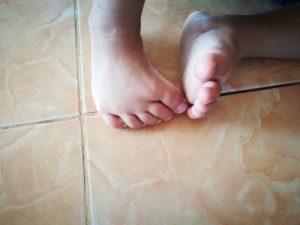Doctor On Call, or DOC for short, is a brand new series brought to you by Medical Channel Asia. This series aims to bring doctors and specialists from various fields to give you an introduction to common health and medical topics that you and the Asian population are interested in. In our 3rd DOC, held on 3 Jul (Saturday), from 2pm to 3pm (GMT+8), we have Dr Felix Li from Dr Felix Li Medical Aesthetics Clinic, to talk to us about Medical Aesthetics.
In this first ever ‘Ask Me Anything’ style of the DOC webinar series, we have Dr Felix Li answer all questions pertaining to medical aesthetics that came in LIVE during our actual event. For Part 1 of the forum, Dr Felix Li answered some of the questions that were pre-collated from the registration process. In this Part 2, Dr Felix will be answering some of the questions posted LIVE by our audience! Read below to find out more about medical aesthetics!
LIVE Question and Answer
Q1: My husband thinks botox is unnatural. What are your views on this?
Dr Felix: I kind of support the husband a little bit (laughs). My philosophy is that if the patient requires a filler treatment, I will be more likely to push the filler treatment to the patient by explaining the advantages of the filler treatments for her. Fillers have a long-term result, and not just looking better immediately. The earlier I do it for you, the earlier I can prevent your face from changing to what you do not want to.
However for botox, there is not much of this. When botox is injected, the muscles are relaxed. The symptoms improve. However, 4 to 6 months later when the botox is gone, the symptoms will come back. I almost never push botox for my patients, The only time I recommend botox to the patient is when the patient requests for it, to take these symptoms away to improve the patient’s quality of life.
On the flip side, some believe that when you inject botox for many years, your face will collapse when you stop it. I would like to say that it is NOT true. Using botox long-term should not have much detrimental effects. Once the botox is gone, the effects will be gone as well.
Q2: Can you remove eye bags?
Dr Felix: Firstly we need to understand what eye bags are. Common misconceptions include: eye bags appear because when we do not have enough sleep, or due to water retention. The actual problem is because the muscles that is holding the fat in is weak, causing the eye bag to be pushing out through the muscles.
The easiest way to remove eye bags is to lie flat! Gravity pulls the eye bag through the weakness. You may use fillers to strengthen the muscles that holds the eye bags in. Fillers to the cheek bone can help strengthen the ligaments, while fillers to the eye muscles itself can help to reinforce the muscle to hold the eye bags in. This will have 2 effects:
- Hold the eye bags back
- Slow progress of eye bags through the years
It is important to start early. If you are older, and the lump of fat has gone through the weakness, you will need surgical treatment by a plastic surgeon to remove the fats.
Q3: What is a proven way to removing old pockmarks scars?
Dr Felix: If it is a huge scar, you can cut it. With respect to pop marks, the most traditional way is subcision. Pop marks develop due to an old pimple bursting and being repaired. The old tissues contract and pull your skin inwards, forming a hole. The oldest way to deal with it is to use a needle and ‘stab’ the fibrous tissues (called subcision), which weakens them and releases the skin, making the pop mark shallower.
As technology progress, we have micro-needling. Instead of stabbing it, a set of needles come in, breaks it apart, and runs a RF pulse to further break it up and regenerate collagen in the area.
Ablative lasers may also be used. Strong acids (TCA CROSS) can directly be dripped into the marks to destroy the matrix from the inside. All of these are aimed at damaging the scar tissues that are holding the skin down.
For more general acne scars, resurfacing treatments are always good. Picosecond lasers are sort of the most convenient way to treat, as it is the safer way as compared to the traditional way of stabbing the tissues or using strong acid. It also has more manageable downtime, pain and risks. However, for extremely deep scars, you may want to use some treatment that is stronger, including surgical methods. Most importantly, you need to discuss with your doctors with regards to the risks involved.
Acne is a whitehead and gets infected by bacteria which develops into a pimple. The bacteria will go to surrounding acne and infect it. This cycle perpetuates itself, and breaking the cycle is extremely important. We want to avoid developing scars because of acne and pimple, without damaging the skin. Few ways to break the cycles:
- Medications (oral or topical) such as antibiotics to kill the bacteria
- Lasers
- Remove comedones (i.e. the oil) by
- Lifestyle modifications
- Using medications
- Facial wash and skincare products
Q4: I have very dry skin. Will using lasers make it worse?
Dr Felix: Another similar question is ‘whether lasers will thin my skin?’ Recap that there are 2 types of lasers: ablative and non-ablative.
Ablative lasers that resurfaces will remove stuff from skin and get the skin to regenerate. This can make the skin drier and more sensitive. What is important are pre- and post-treatments, on top of choosing the treatment wisely.
Other lasers (such as lasers for freckles) will not affect the skin’s conditions. Lastly, there are certain types of lasers that promotes collagen formation in your skin. The skin will then be able to hold more moisture and make dry skin better.
Q5: What should I do if I suspect vascular occlusion after filler injections?
Dr Felix: Vascular occlusion usually happens soon after the injection. The most obvious sign is pain. If your blood vessels are blocked, the tissues will not receive oxygen and start to die out, which will result in pain. If you fill unnatural pain, especially in area not being injected, you should straightaway sound out to your doctor.
Another sign may be skin changes, where the skin turns white, flushed, and then afterwards darken. In terms of high risk areas (frown and nose area): also include blurring vision, double vision, or pain/ pressure in the eyes.
What we can do in terms of vascular occlusion not related to blindness, the most straightforward is to dissolve the HA fillers, using chemical called hyalase. There are certain products such as autologous fats, collagen stimulators and permanent fillers will not be able to be dissolved. But by and large, HA fillers, which are the most commonly used fillers, can be dissolved using hyalase. If the skin is damaged, the treatment would take time to repair the damaged skin which usually can be complete.
For blindness, there is no good cure for that. We may use high doses of hyalase to be pulsed into the back of the eye to try to get it to the area affected. Chance of recovery is pretty low, although the chance of it happening is also very low. Before injecting any dangerous areas, you really have to understand this is the risk you are taking, and any alternatives to treating the area which you may want to consider.
Q6: Which is better for sagging jowls: Profhilo vs Fillers vs Threadlift?
Dr Felix: Based on my experience, Profhilo is used primarily for skin hydration. It is used by doing 5 injections on each side of the face, which is much more bearable than other ways. It is purported to do lifting, and a lot of people do promote this function. But based on my experience, if you have saggy jowls and lost of jawline contour, it is very unlikely Profhilo will do anything.
Profhilo shines in younger patients who do not really have sagging issues. It gives a very nice tightening effect. Another thing it does well is the lifting and tightening of the neck, in the lack of other really good options. But when it comes back to actual sagging, it does not really do the job.
By and large, thread lift is a skin tightening procedures for more superficial planes (i.e. the skin itself). Sagging is due to lack of support. I will never do thread lift before fillers, because gravity will pull the skin back down eventually. To make the thread lift results last, we need to address the cause of the sagging.
Usually for facelift, I start with Ulthera then fillers. Ulthera does a global skin tightening, sort of like a harness. We will get a general improvement and upward tug, which also supports the skin with collagen formation overtime. This makes the weight I need to carry less. After which I will put the fillers in to give support to the ligaments, reversing the changes due to age in terms of soft tissue support, restoring the support. When you want the perfect ‘wow’ result at the end of all these foundations done, then I will use thread lift.
The greatest pitfall of aesthetic medicine is putting products and support where they were not there before.
Q7: Do collagen blends (peptides, glycine, vitamin supplements etc.) do anything for our face and facial ageing?
Dr Felix: Simply put, the collagen can already be found in our food (e.g. fish, eggs). Supplements would just be an add-on to it. These collagen drinks are not likely to go directly to the face as the face is not generally in a state of repair. Hence I would say: not really. However, if you just did laser treatments, and your face is in the state of repair, the collagen will go to the part of the body (in this case your face) that is asking for it.
Q8: Which injectables can improve the elasticity of the skin on my face?
Dr Felix: Once again, talking about products that will increase the collagen matrix. I would say, if you have really dry and sensitive skin, my personal favourite is Reduran, which works really well for thickening the collagen matrix for skin hydration.
If you have pretty good skin but want maintenance and anti-ageing, then Profhilo is great as it is convenient and easy, with relative less pain.
There are also laser options to improve the collagen in your skin as well.
One interesting thing is that when you inject HA fillers, it is not really injecting into the skin. Volite is like a permanent moisturiser. It is a HA filler that you inject, and it stays under the skin for years, drawing water to itself. Some called it a ‘super skin booster’ as it stays for a long time, keeping the skin moisturised.
These treatments are meant for the skin. Some other HA fillers are meant for lifting and contouring, but when these fillers are done, it improves the skin condition as well due to the collagen effect of HA.
Q9: How do I make my skin youthful, anti-ageing and glowing?
Dr Felix: You got to see a doctor for consultation! (laughs)
In general:
- Good skin care habits
- Exercise
- Water
- Anti-oxidants in diet (fruits and vegetables)
- Sunblock
In terms of treatment, for skin tightening, I will usually start with Ulthera, then fillers to restore support. If you want something with a ‘wow’ factor, then some fillers or threads for contouring.
Skin quality treatments (e.g. pigmentations): good skin care habits, sunblock, certain lasers.
Redness, eczema and sensitive skin: certain lasers and overall collagen (Profhilo, Rejuran, Volite etc.)
Most important: not to do something that you don’t need, as you may not see the effect that you want, and may even develop complications down the road. Also, you should not do things that are good for you in the short term but may negatively affect you in the long term. Seek a professional and aesthetic doctor that you can trust, someone who may have treated your friends or family members. Talk to your doctor about your expectations and listen to the options available, and choose what is most appropriate for you. Do not blindly chase what is the most popular treatment currently.
What’s next in store?
- Click here to see Dr Felix Li’s presentation in Part 1 if you have missed it!
- See the full video on both our Medical Channel Asia’s Facebook page and our Medical Channel Asia’s YouTube channel:
- If you have missed our DOC #1 and DOC #2, visit our Medical Channel Asia’s YouTube page, or you can also read the articles on our MCA website!












